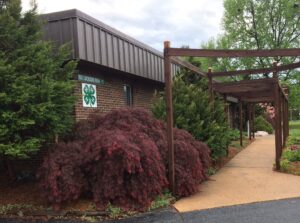Growing Japanese Maples
go.ncsu.edu/readext?780399
en Español / em Português
El inglés es el idioma de control de esta página. En la medida en que haya algún conflicto entre la traducción al inglés y la traducción, el inglés prevalece.
Al hacer clic en el enlace de traducción se activa un servicio de traducción gratuito para convertir la página al español. Al igual que con cualquier traducción por Internet, la conversión no es sensible al contexto y puede que no traduzca el texto en su significado original. NC State Extension no garantiza la exactitud del texto traducido. Por favor, tenga en cuenta que algunas aplicaciones y/o servicios pueden no funcionar como se espera cuando se traducen.
Português
Inglês é o idioma de controle desta página. Na medida que haja algum conflito entre o texto original em Inglês e a tradução, o Inglês prevalece.
Ao clicar no link de tradução, um serviço gratuito de tradução será ativado para converter a página para o Português. Como em qualquer tradução pela internet, a conversão não é sensivel ao contexto e pode não ocorrer a tradução para o significado orginal. O serviço de Extensão da Carolina do Norte (NC State Extension) não garante a exatidão do texto traduzido. Por favor, observe que algumas funções ou serviços podem não funcionar como esperado após a tradução.
English
English is the controlling language of this page. To the extent there is any conflict between the English text and the translation, English controls.
Clicking on the translation link activates a free translation service to convert the page to Spanish. As with any Internet translation, the conversion is not context-sensitive and may not translate the text to its original meaning. NC State Extension does not guarantee the accuracy of the translated text. Please note that some applications and/or services may not function as expected when translated.
Collapse ▲Learn about growing Japanese maples in your home garden:
There are two types of Japanese maples; the palmatum group and the dissectum group. The palmatum group has leaves reminiscent of our native maples while the dissectum or cutleaf group has finely serrated deeply lobed leaves. This delicate leaf morphology is colored in shades of either green or red and is the most attractive feature of the cutleaf Japanese maples.
Japanese maples in general are rounded-canopy trees with smooth bark and undulating branches. The cutleaf varieties tend to be small from 3-9 feet in height. Their small size makes them excellent specimen trees near patios, homes, and driveways. The tree can be used as an accent and even as a potted plant.
Japanese maples have specific site requirements. These trees prefer dappled shade, although you can grow them in full sun. Japanese maples in the full sun tend to be stressed and pick up summer leaf spot diseases readily. Cutleaf Japanese maples require evenly moist well-drained soil conditions for best performance. These trees should be protected from winds and winter cold by planting them near structures, large trees or among a planting of other small trees and shrubs.
Some of my favorite Japanese maples are the big red leafed ‘Bloodgood’ Japanese Maple, ‘Sango Kaku’ Japanese Maple with its green leaves that fade to yellow in the fall and ‘Glowing Embers’ Japanese Maple an aptly named Japanese Maple with leaves that fade from green to purple, fluorescent orange or yellow.
Japanese maples and specialty conifers can be relatively expensive but they are worth it. This is because propagating the trees in general is not an easy task. Most conifers are propagated from rooted cuttings while most Japanese maples are grafted. Producers graft the desirable Japanese maple varieties onto rootstocks of other maples to improve their performance.





